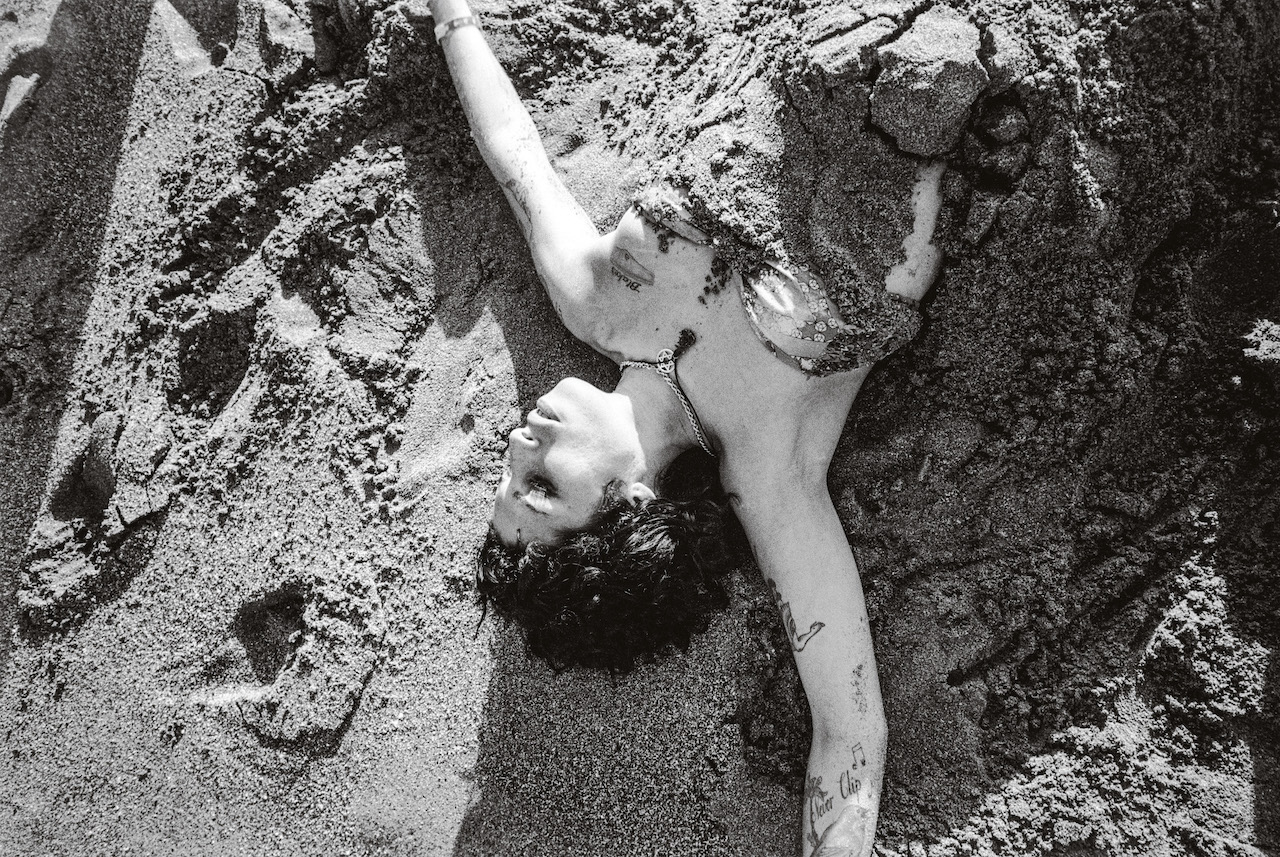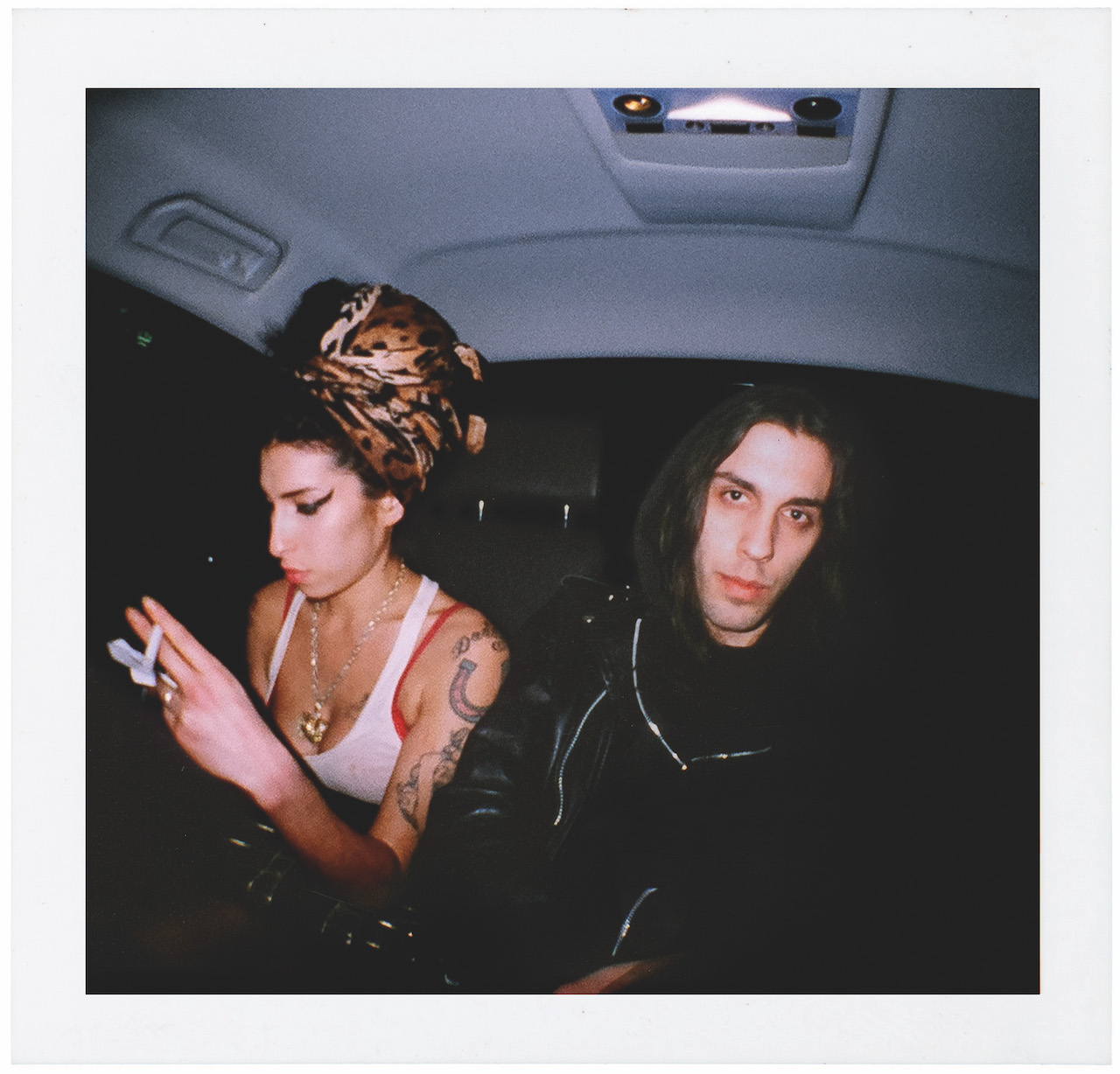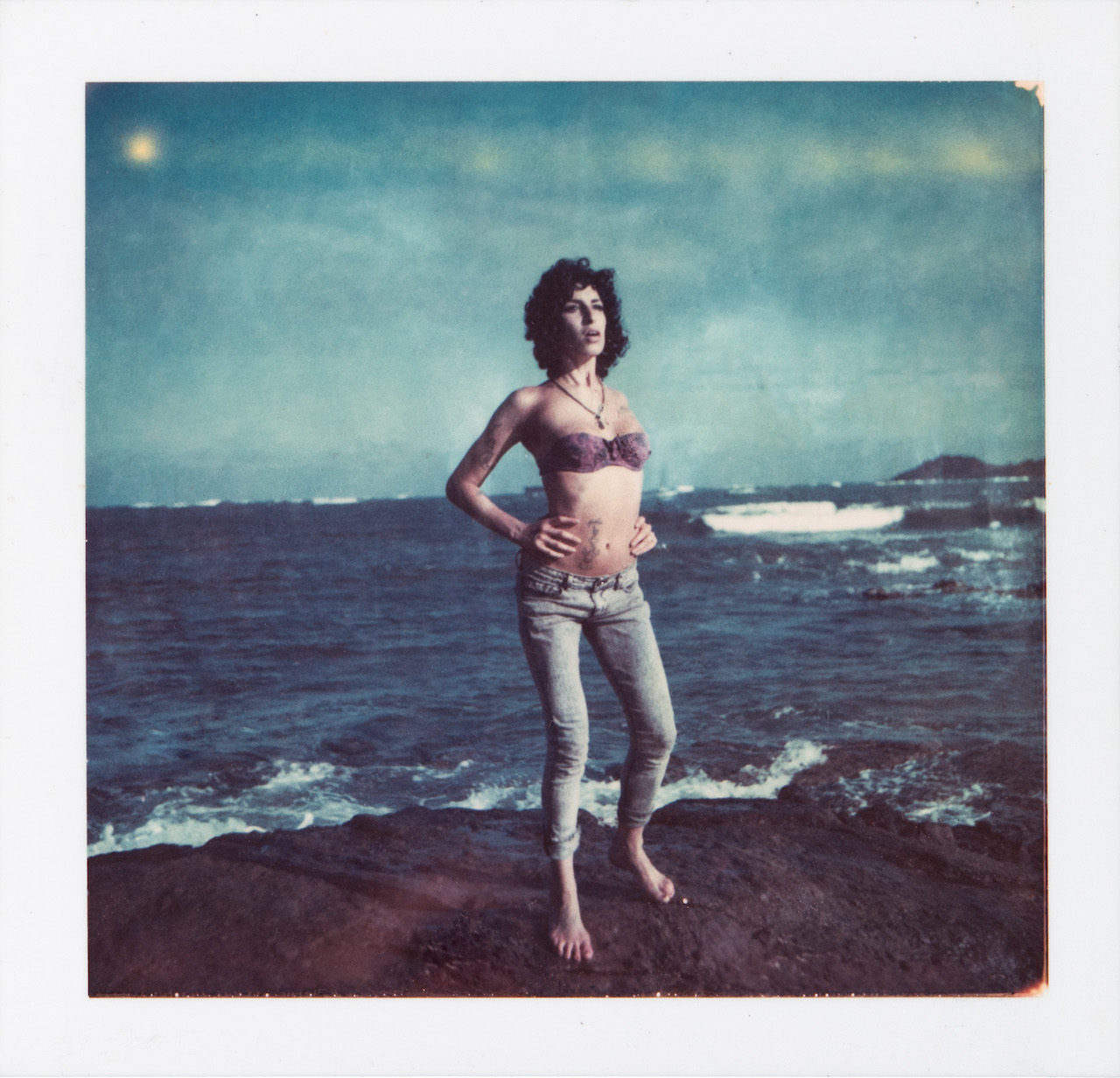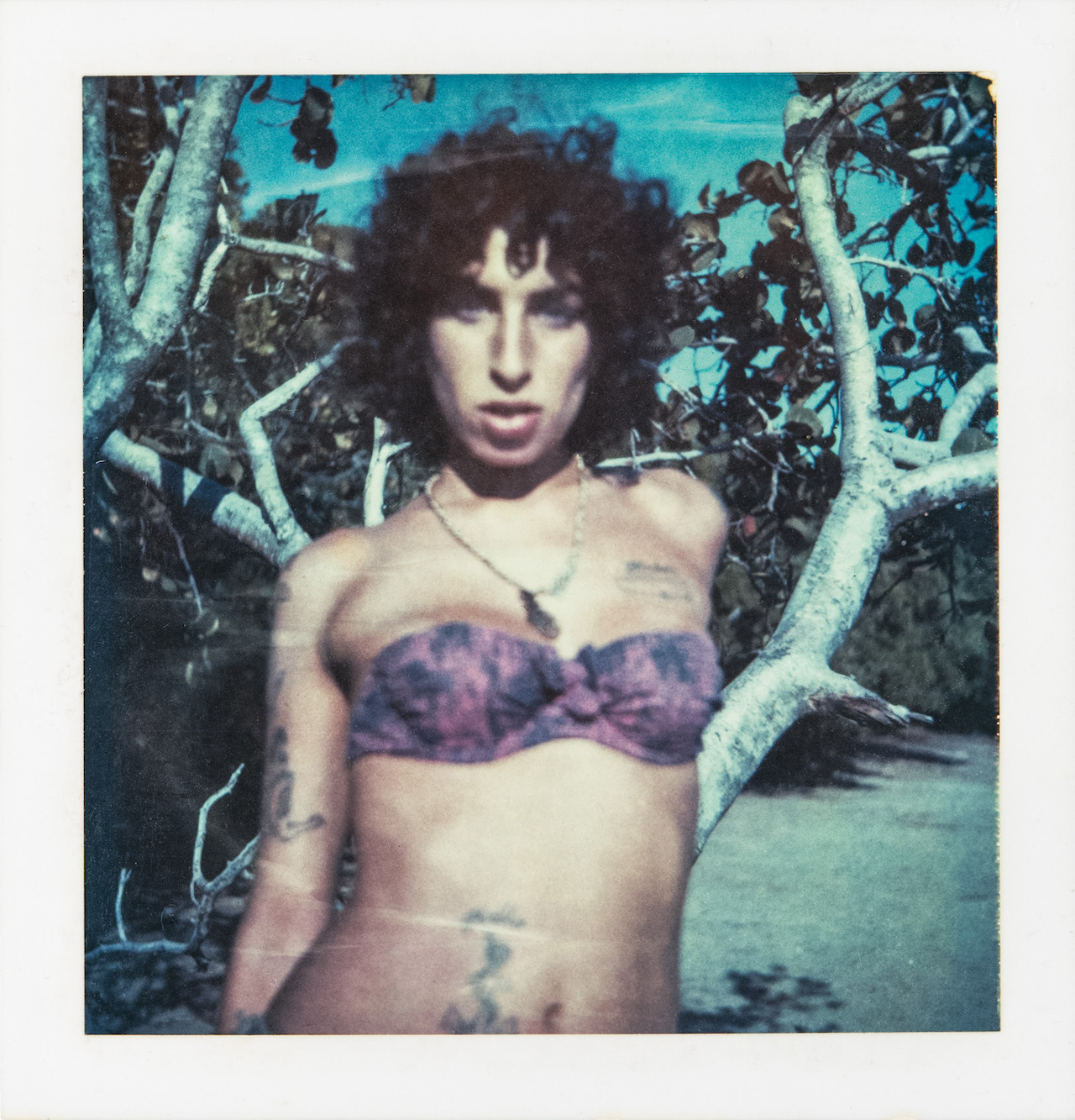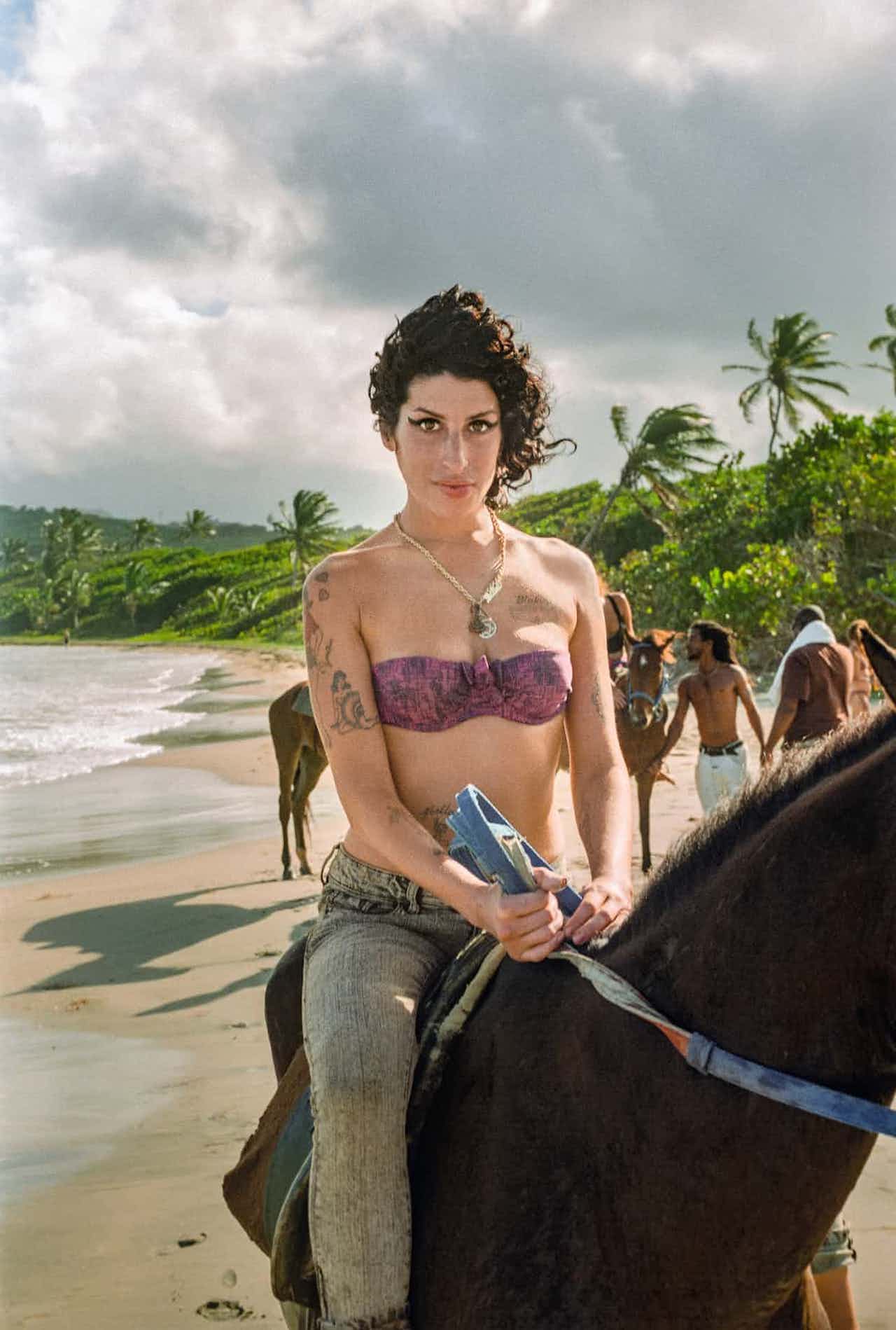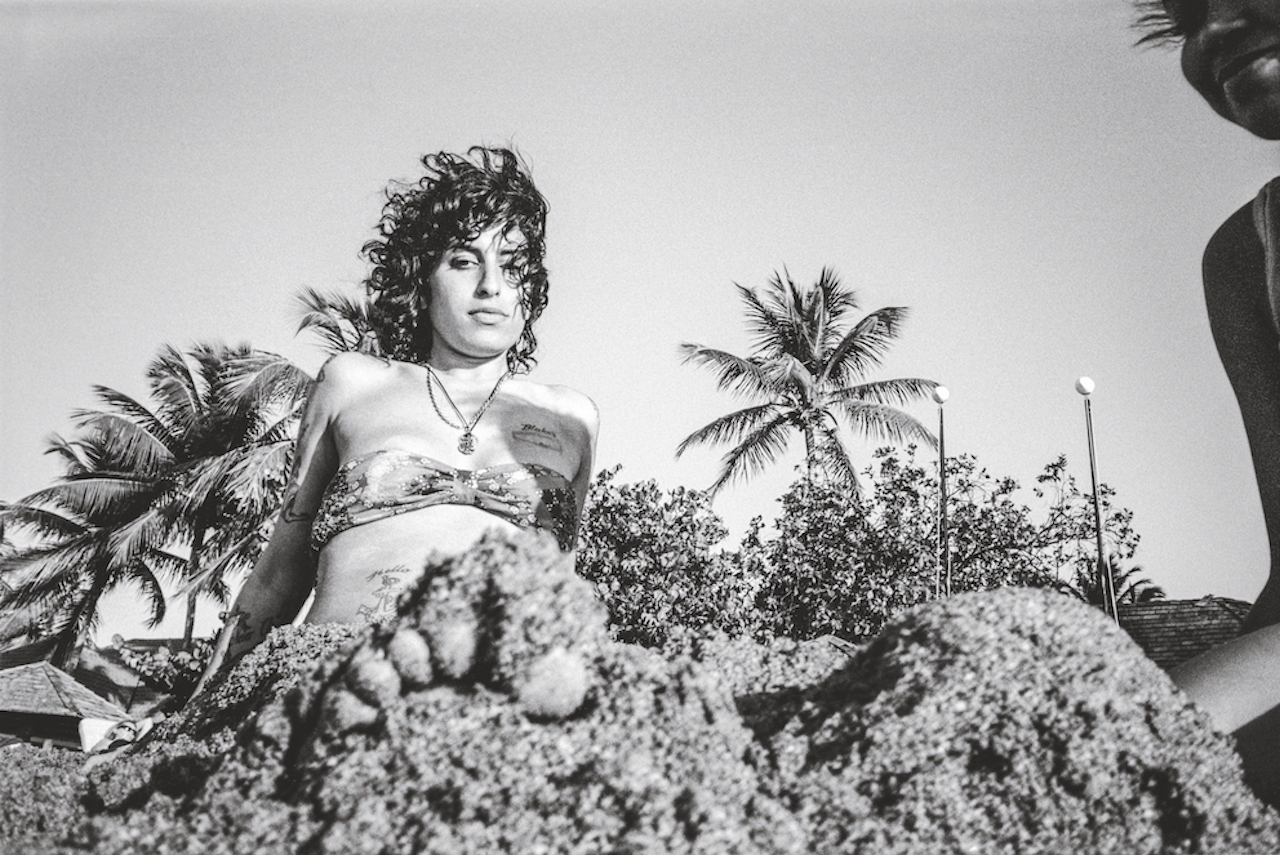On the tenth anniversary of Amy Winehouse’s tragic death, Blake Wood remembers the moments he spent with the artist in Camden and St Lucia, and his desire to capture her as a person, not a persona
The first time Blake Wood met Amy Winehouse, she thought he was messing with her. It was January 2008, in London. Wood was a shy 22-year-old, staying at close friend Kelly Osbourne’s house. Introduced simply as Blake, Winehouse initially thought he was joking – at the time, her then-husband Blake Fielder-Civil was in jail for attempting to pervert the course of justice – but the pair clicked instantly. A month later, they were living together.
“It’s something that you rarely get in life, and I’ve realised since then. That immediate kind of family energy, the kind when you meet with certain friends. I had that with Amy almost right off the bat,” Wood recalls. “That first six months that we really knew each other, we were together pretty much every day.”
Wood, then a budding photographer, had just moved to England from the US. He was “enamoured” by the London he saw, taking his camera wherever he went, seeking to capture the hectic energy of the capital during a time of social and political flux. Winehouse was 25 and at the peak of her fame, claiming five Grammys in February 2008 – a then-record for a British woman. She had solidified an iconic status as a globally renowned Jazz musician at a time in which Jazz musicians were not meant to be popular. But there were low moments too. Throughout that year, Winehouse battled addictions that were gleefully documented by a ruthless tabloid press, while struggling to deal with the all-consuming intensity of her fame.
As the Paparazzi continued to follow their every turn, often camping outside their house in Camden, Wood made a conscious decision to photograph the Amy he saw, rather than the persona that was being proliferated around him. “I started taking photos of her after about day three [of meeting her]. It wasn’t so much a conscious decision. It was just… my rhythm at the time,” he explains. “But I remember [thinking that] I don’t want to photograph her struggles, I really want to capture this incredible person, who she was at her core.”
Winehouse herself was relentlessly supportive: continually pushing Wood to be more ambitious, telling close friends and family members about his talent and hanging his black and white portraits on her wall. It was typical of his friend, Wood says, she was endlessly kind and supportive.
At the end of 2008, Wood and Winehouse shared a holiday in St Lucia. Captured on an old polaroid camera, his photographs speak to a different side of the pop icon. Riding horses or playing in the sand, she has eschewed her signature beehive hairdo in favour of natural curls. More than anything, Wood says, St Lucia was a refuge. Winehouse was going through a divorce, but she looks rejuvenated after months away from the crushing cycle of touring. “It was a moment away from chaos, away from any drama, drugs, anything that was prevalent in London,” Wood says. “We were able to really just be and it was the first time in our friendship that I saw her really truly be able to do that.”
As well as trying to move beyond Winehouse’s well-known Back to Black-era aesthetics, Wood continually tried to evoke a timeless quality in his work. It was an aesthetic and mood that naturally appealed to Winehouse; her wardrobe blended 60s staples with contemporary style, and her music mixed jazz and blues with soul or Motown influences. In St Lucia, Winehouse took on the role of collaborator, spontaneously dragging Wood on shoots around the island after seeing that he was unhappy after almost four months without work.
“She saw that I was down [from not working] and she was like, ‘let’s go and make work today’. She knew that we both were happiest when we were creating. She took me to the beach and she just did all of this stuff,” Wood recalls. “I didn’t tell her where to pose or where to be or anything. She just did it.”
“She was someone who was kind and loved with her whole heart, more than anyone I’ve ever met. She was never embarrassed to be fully herself. People don’t give her enough credit for that”
In 2018, the images were immortalised in a book published by Taschen, Amy Winehouse, which contains 150 largely unseen images. Soft and intimate, they are a far cry from chaotic paparazzi shots, or on-stage performance images that we have become accustomed to. They showcase the singer’s childish side, in images of Winehouse playing on the beach, pretending to be a mermaid for her goddaughter. In one photograph, Winehouse poses on a branch, staring intensely at the camera. In another, she stands on top of a rock, hands on hips, gazing into the distance. The images are quiet and contemplative, but with a strength that doesn’t hide her vulnerability. As Wood notes, while St Lucia was an intended escape, the pressures of life were ever-present.
Reflecting on the tenth anniversary of Winehouse’s death, on 23 July 2011, Wood sees his images as a conscious attempt to “change the narrative around her”. Written into every frame and composition is a fierce desire to show the person he knew. “People saw the performer, and then they saw this media-created villain, or this negative thing in the tabloids. And she wasn’t that,” he says. “I think if I could describe who she was, it would be love-embodied. She was someone who was kind and loved with her whole heart, more than anyone I’ve ever met. She was never embarrassed to be fully herself. People don’t give her enough credit for that.”
Amy Winehouse by Blake Wood was published by Taschen in 2018.

